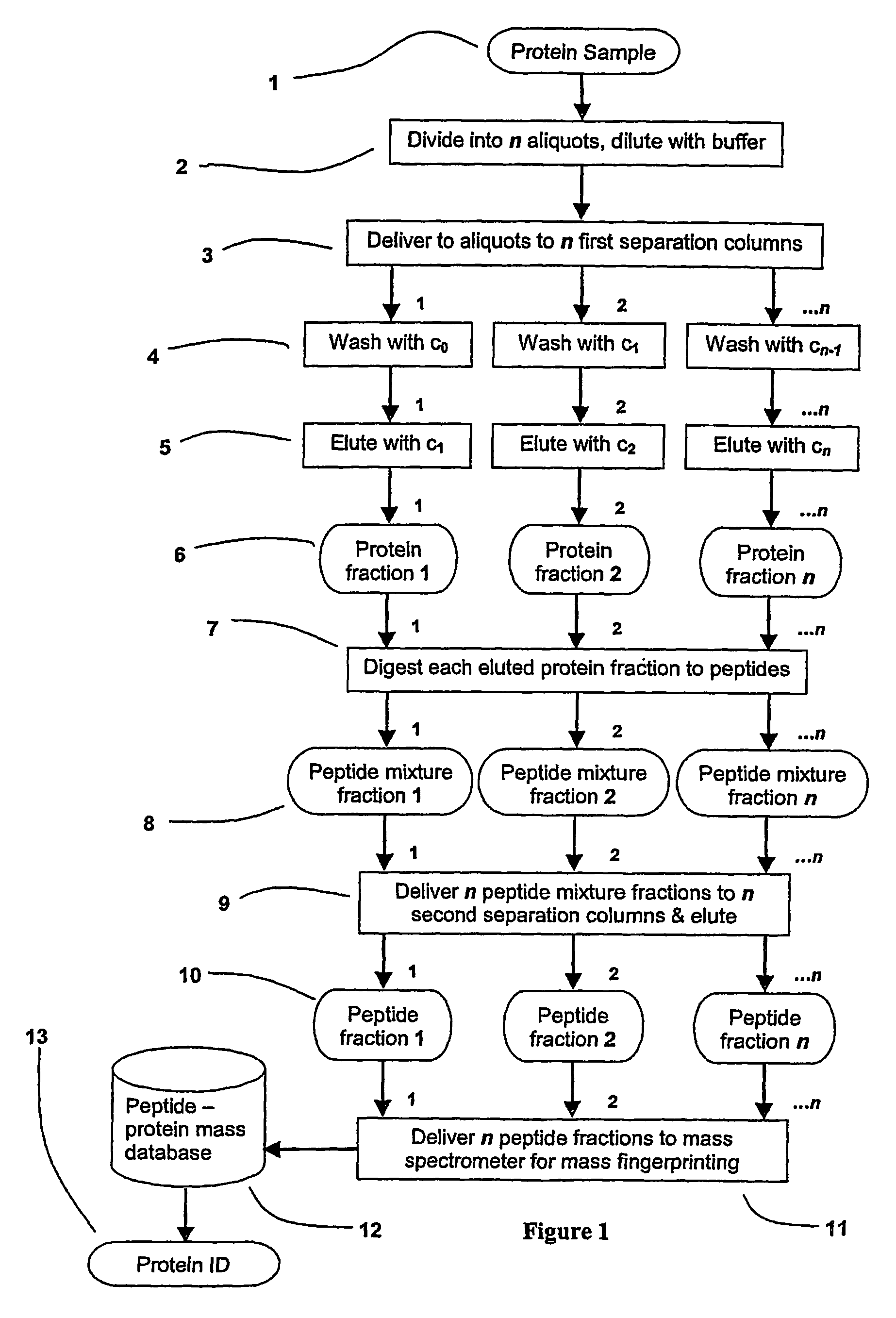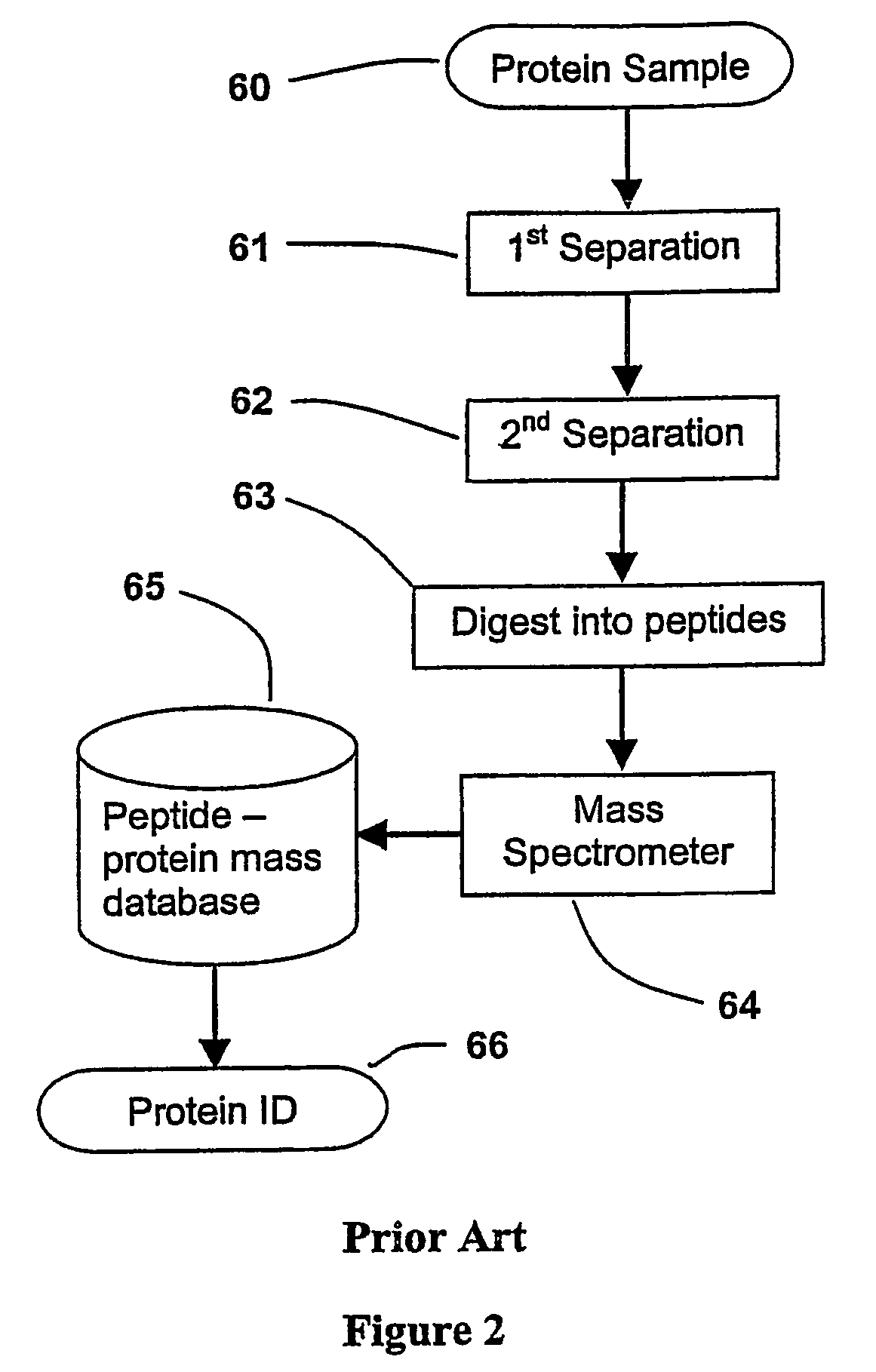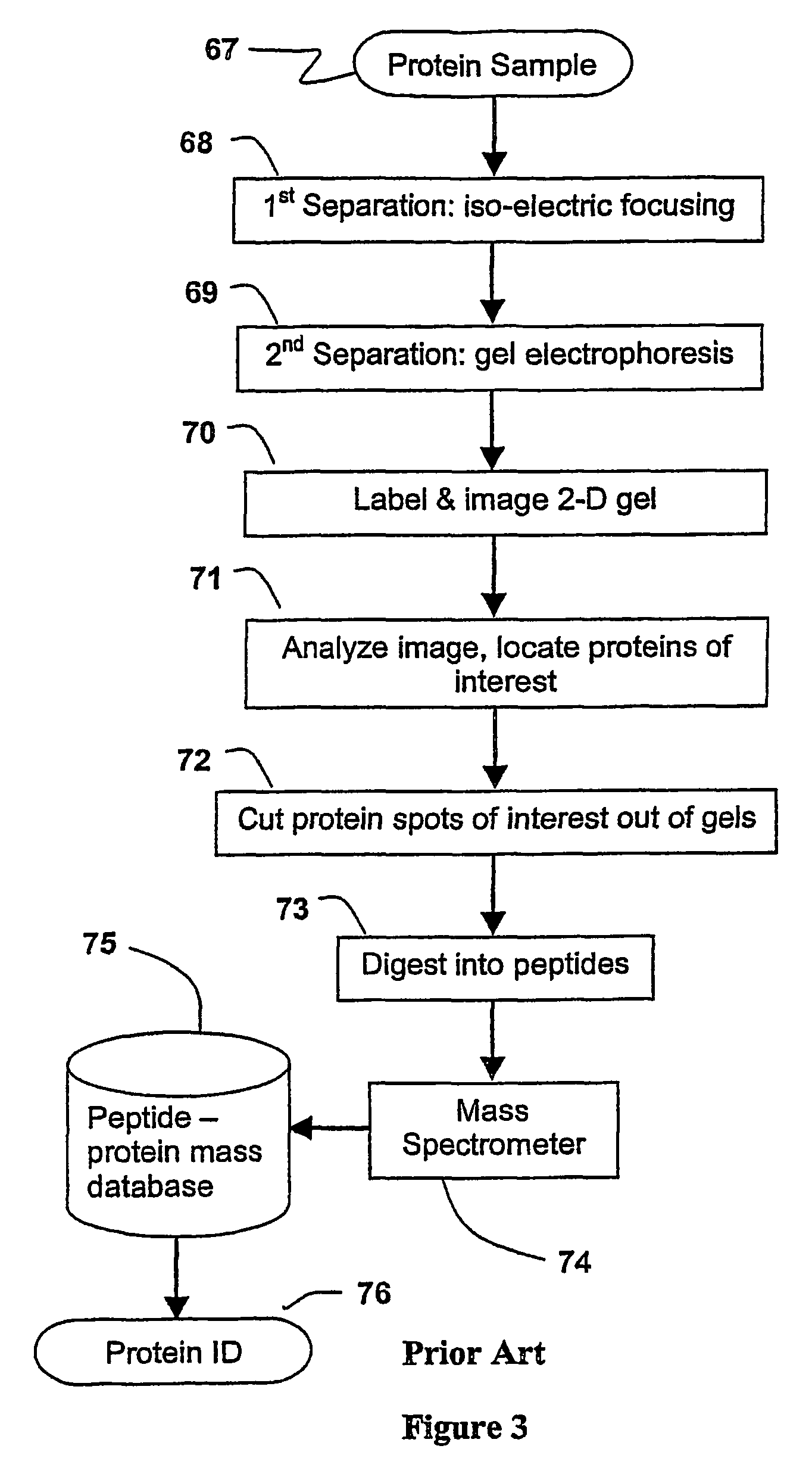Parallel process for protein or virus separation from a sample
a protein or virus, parallel technology, applied in the direction of separation process, peptide, instrument, etc., can solve the problems of large amount of manual manipulation of reagents and gels, lack of repeatability and reproducibility, and high labor intensity of the process, so as to enhance the automation and efficiency of the system. , the effect of optimizing efficiency
- Summary
- Abstract
- Description
- Claims
- Application Information
AI Technical Summary
Benefits of technology
Problems solved by technology
Method used
Image
Examples
Embodiment Construction
[0033]The present invention has utility as a method for parallel automated protein or virus separation and identification. The ability to detect and optionally purify proteins or viral populations from a given sample in a parallel manner according to the present invention affords efficiency and speed compared to conventional sequential techniques. The parallel analysis of the present invention is amenable to rapid field detection of proteinaceous or viral pathogens associated with disease outbreaks, bioweapon screening, and the like. A sample is divided into a series of aliquots with the aliquots being subjected to at least two successive parallel separation steps in order to resolve protein components or viral components therefrom. A digestion after the first separation or second separation often facilitates subsequent analysis.
[0034]While the present invention is detailed hereafter with respect to protein analysis, it is appreciated that the present invention is likewise well suit...
PUM
| Property | Measurement | Unit |
|---|---|---|
| mass spectrometry | aaaaa | aaaaa |
| MALDI mass spectrometer | aaaaa | aaaaa |
| molecular weight | aaaaa | aaaaa |
Abstract
Description
Claims
Application Information
 Login to View More
Login to View More - R&D
- Intellectual Property
- Life Sciences
- Materials
- Tech Scout
- Unparalleled Data Quality
- Higher Quality Content
- 60% Fewer Hallucinations
Browse by: Latest US Patents, China's latest patents, Technical Efficacy Thesaurus, Application Domain, Technology Topic, Popular Technical Reports.
© 2025 PatSnap. All rights reserved.Legal|Privacy policy|Modern Slavery Act Transparency Statement|Sitemap|About US| Contact US: help@patsnap.com



